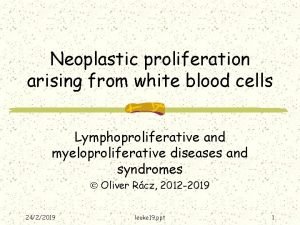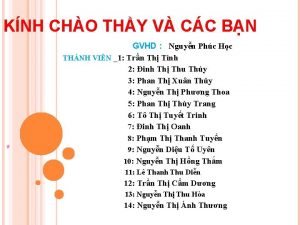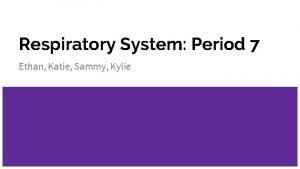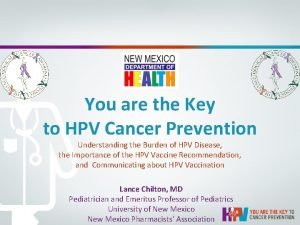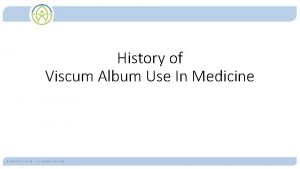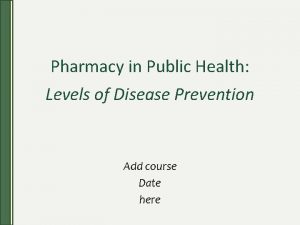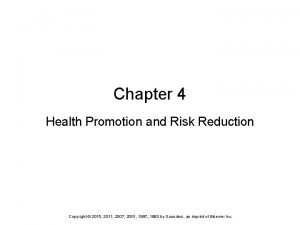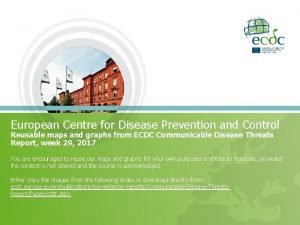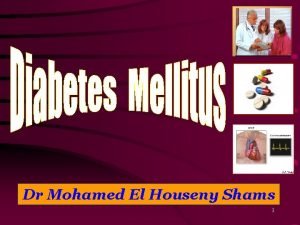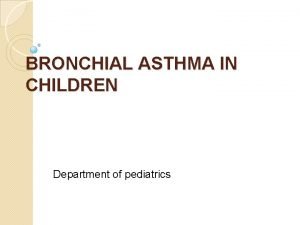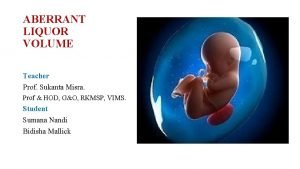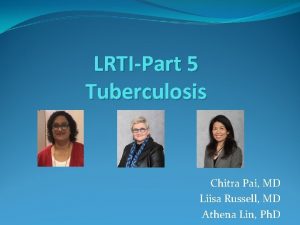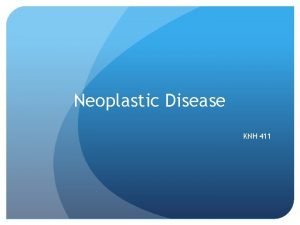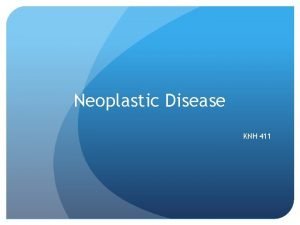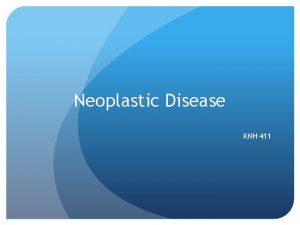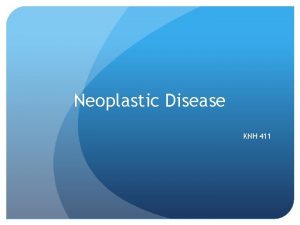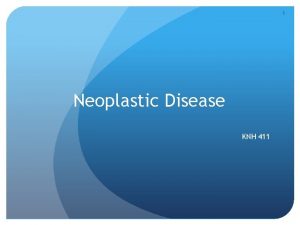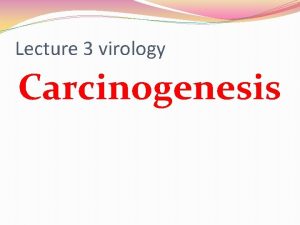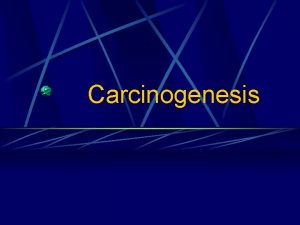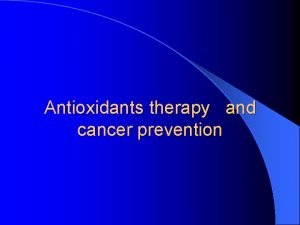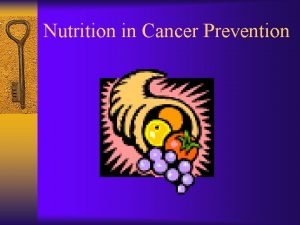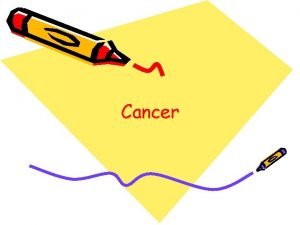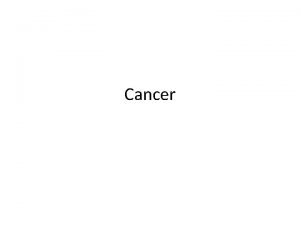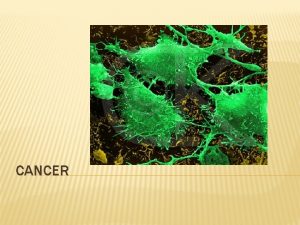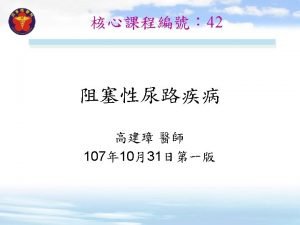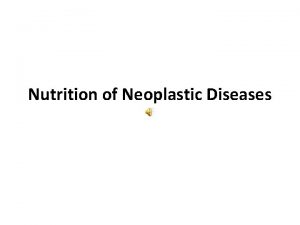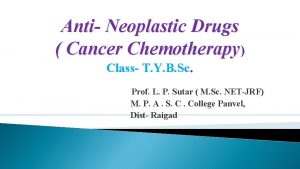Neoplastic Disease KNH 411 Cancer prevention Carcinogenesis Etiology


























- Slides: 26

Neoplastic Disease KNH 411

Cancer- prevention Carcinogenesis - Etiology Genes may be affected by antioxidants, soy, protein, fat, kcal, alcohol Nutritional genomics – study of genetic variations that cause different phenotypic responses to diet Vit C beta car, vit a, vit k


© 2007 Thomson - Wadsworth

Chemotherapy- treatment Common side effects due to toxicity to rapidly dividing cells: Neutropenia- low WBC count- infections, food safety Thrombocytopenia- low platelet count, sluggish, may not have energy, could need liquids Anemia- sluggish, tired Diarrhea- IV nutrition, may not tolerate Mucositis- inflammation of the mucous membrane, mouth sour (avoid salty, acidic, temperature foods) want room temp Alopecia- hair loss- psych profile Cardiotoxicity, neurotoxicity, nephrotoxicitycardiac- more calories- less fluid, nerve, kidney

Radiation Side effects: Delayed wound healing Fatigue, mucositis, dysguesia, xerostomia (dry mouth), dysphagia, odynophagia, severe esophagitis, dehydration- going through many things Radiation enteritis, fistulas, strictures, chronic malabsorption, severe diarrhea TPN may be warranted to prevent weight lossgreater than seven days

Nutrition Therapy- treatment Prevent malnutrition* key Screening and assessment important Be aware of cancer dg and treatments most likely to cause malnutrition Prokinetics can help with this Anti-emetics Reversing this is extremely difficult High risk Chemo Surgery Radiation

Nutrition Implications Cachexia – Metabolic alterations Tumor induces hypermetabolic catabolic state through chemical mediators Tumor specific “cachectic factors” Weight loss, anorexia, muscle wasting, fatigue, early satiety Standard therapy – nutrition support

© 2007 Thomson - Wadsworth

Nutrition Implications Abnormalities in CHO, lipid, protein metabolism Normal physiologic conservation seen in starvation does not occur CHO – insulin resistance, increased glucose synthesis, gluconeogenesis, increased Cori cycle activity, decreased glucose tolerance and turnover

Nutrition Implications Abnormalities in CHO, lipid, protein metabolism Protein - amino acids not spared, depletion of lean body mass, increased protein catabolism, or decreased protein synthesis Lipid – increased lipid metabolism, decreased lipogenesis, decreased LPL, presence of lipid-mobilizing factor (LMF)

Nutrition Implications Cancer treatment Anemia Constipation Dysgeusia Diarrhea Early satiety Mucositis Nausea, vomiting Weight loss Xerostomia

Nutrition Interventions Nutrition Assessment SGA- 3 Anthropometrics including height, weight, detailed weight hx, fluid retention, body composition Biochemical including serum hepatic proteins Clinical signs and symptoms Valid nut assessments tool- med and physical exam A- well nourished cancer client B- mod nourished C severe malnutrition Scale 1 -9 - 1 no intervention- 9 or more symptoms to managefirst person to be seen – ranking for seeing a client

Nutrition Interventions Nutrition Assessment Detailed diet hx and current intake Foods tolerated, special diets, use of CAM, supplements, liquid nutritional supplement preferences

Nutrition Interventions Determining Nutrient Requirements Individualized Kcal to maintain weight and prevent loss Protein to prevent negative nitrogen balance and meet synthesis needs Needs may be higher with severe diaherra Fluid needs - 30 -35 m. L/kg- 1 cc per kcal most common Multivitamin mineral supplement < 150% DRI

Nutrition Interventions Nausea & Vomiting - Chemotherapy Small, low-fat meals morning of, avoid fried, greasy and favorite foods for several days Clear liquid diet Electrolyte-fortified beverages Non-acid fruit drinks Avoid “creamy” liquid nutritional drinks Anti-emetics 30 -45 min. before meal Avoid noxious odors Review medication list for potential causes Pro-kinetics CAM – acupressure, acupuncture, hypnosis, guided imagery

Nutrition Interventions Early Satiety- problem encountered with clients Small, frequent nutrient-dense meals Beverages between meals and should contain nutrients Avoid high-fiber and raw vegetables Pro-kinetics- work against early satiety

Nutrition Interventions Mucositis- inflamed GI tract- pain Thorough and systematic assessment of mouth Good oral hygiene important Oral glutamine Narcotic analgesics Eat soft, non-fibrous, non-acidic foods Avoid hot foods Encourage liquids; non-acidic juices High-kcal, high-protein shakes & supplements


Nutrition Interventions Diarrhea Drink small amounts of fluid frequently throughout day Avoid large amounts of fruit juice Oral rehydration fluids and nutritional beverages Antidiarrheal medications Foods high in soluble fiber

Nutrition Interventions Dysgeusia- hard to combat Assess taste changes – metallic taste, aguesia, heightening of certain tastes (sweets), aversions Avoid metal utensils, drink from glass Incorporate other high-protein foods if aversion to meats exists Increase spices, flavors Non-sweet supplements, or juice- or yogurt-based alternatives

Nutrition Interventions Xerostomia- help with dry mouth Artificial saliva/ mouth moisturizers Gels, lozenges, mouthwashes Sugar-free gum, sour-flavored hard candy

Nutrition Interventions Anorexia Pharmacologic agents to increase appetite Pharmacologic agents to treat weight loss Physical activity Oral supplements


Nutrition Interventions Nutrition Support Enteral vs. parenteral Nutrition support inappropriate for those with terminal cancer or for pts. with poor prognosis for whom otherapies have been exhausted ASPEN practice guidelines for nutrition support- TPN

Nutrition Interventions Nutrition Support Home nutrition support May maintain quality of life Lack of appetite and food intake may be greater concern to family members, caregivers than to pt.
 Primary prevention secondary prevention tertiary prevention
Primary prevention secondary prevention tertiary prevention Periradicular
Periradicular Etiology of cerebrovascular disease
Etiology of cerebrovascular disease Reed sternberg cells
Reed sternberg cells Squamous cell carcinoma
Squamous cell carcinoma Knh
Knh Knh
Knh How the respiratory system maintains homeostasis
How the respiratory system maintains homeostasis Hpv cancer prevention
Hpv cancer prevention Cancer burden of disease
Cancer burden of disease Chapter 19 disease transmission and infection prevention
Chapter 19 disease transmission and infection prevention Chapter 19 disease transmission and infection prevention
Chapter 19 disease transmission and infection prevention Health promotion and levels of disease prevention
Health promotion and levels of disease prevention Chapter 26 infectious disease prevention and control
Chapter 26 infectious disease prevention and control Health promotion and levels of disease prevention
Health promotion and levels of disease prevention Chapter 19 disease transmission and infection prevention
Chapter 19 disease transmission and infection prevention European centre for disease prevention and control
European centre for disease prevention and control Circling back synonym
Circling back synonym Etiology model
Etiology model Conclusion of malaria
Conclusion of malaria Latin word for tooth
Latin word for tooth Etiology
Etiology Etiology of bronchial asthma
Etiology of bronchial asthma Writing pes statements
Writing pes statements Oligohydramnios management
Oligohydramnios management Arabinoglycan
Arabinoglycan Asthmatic lung x ray
Asthmatic lung x ray



